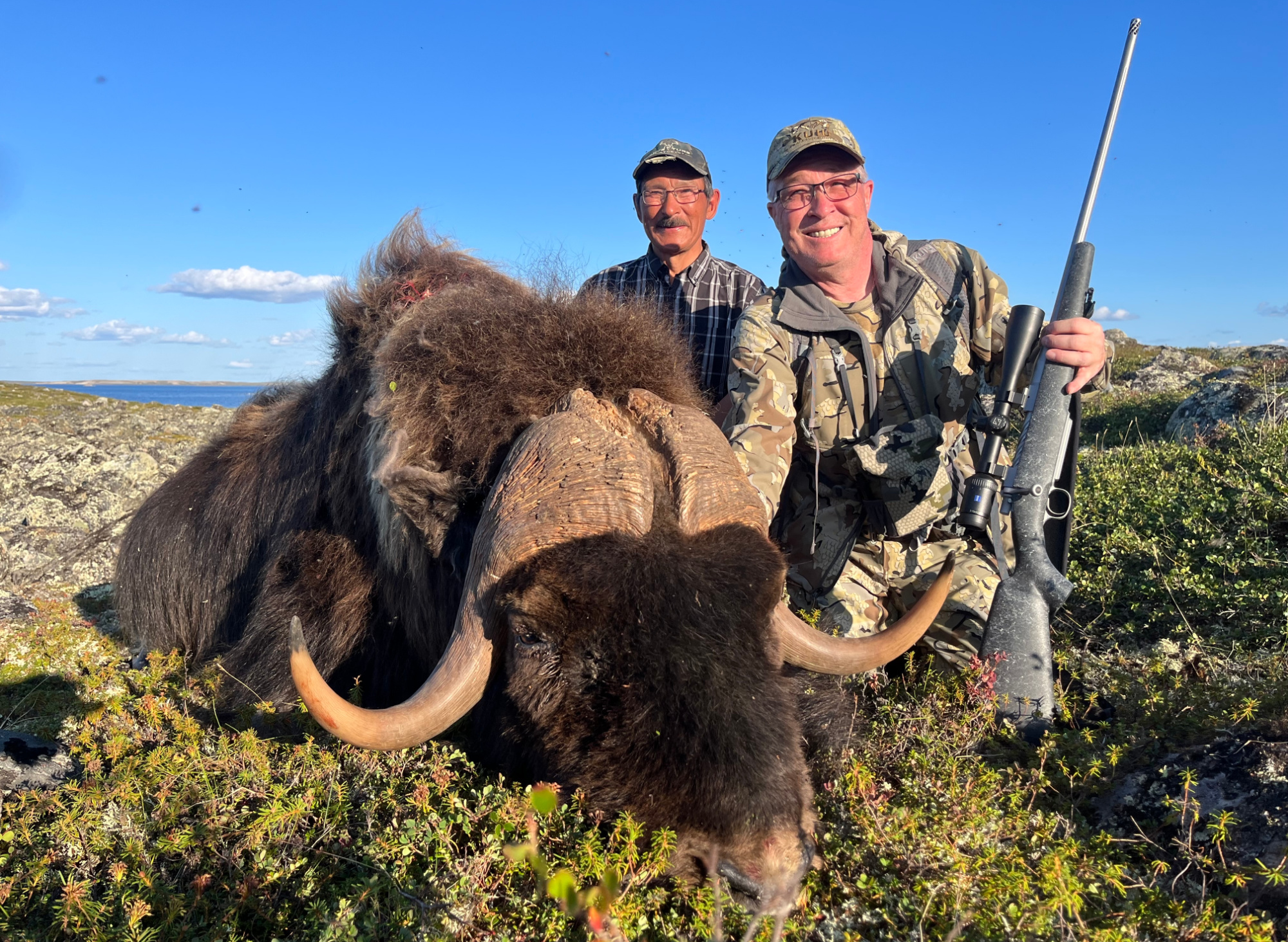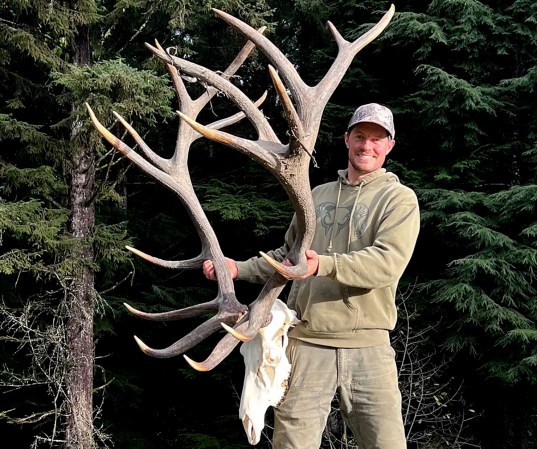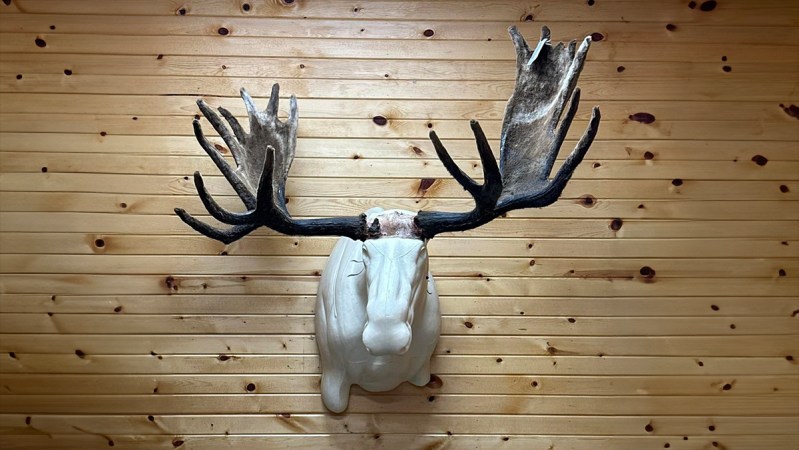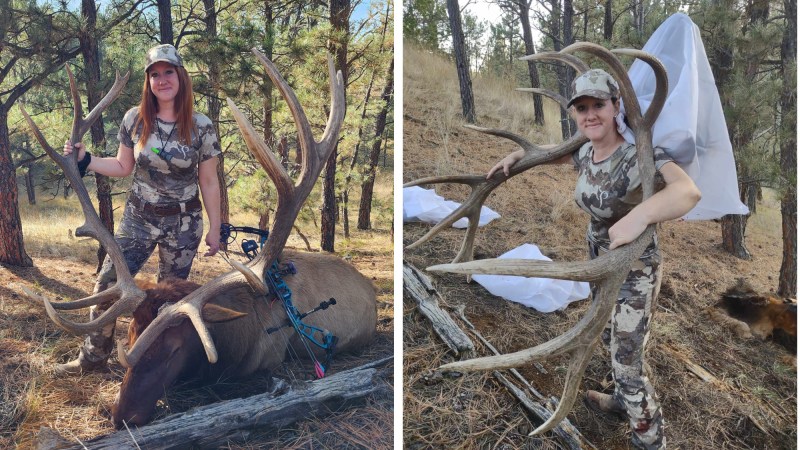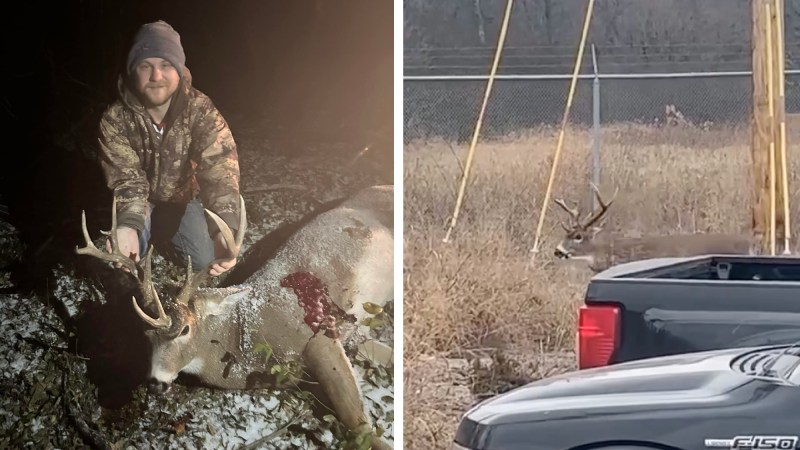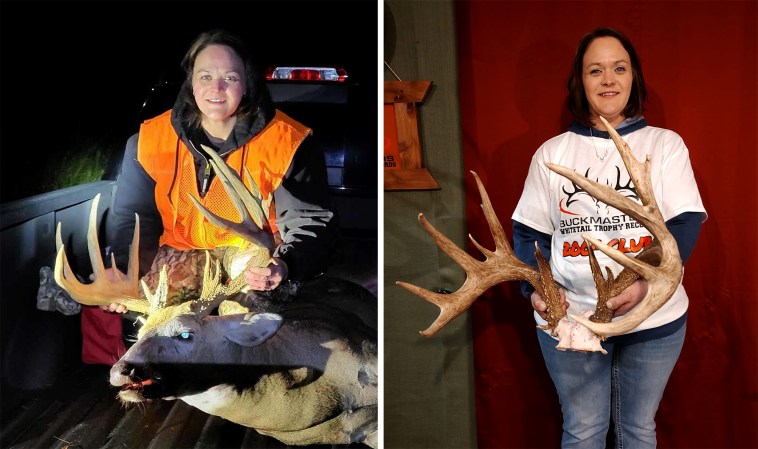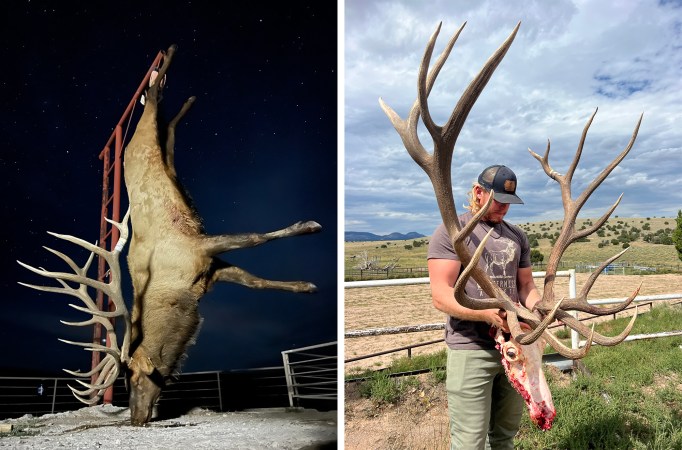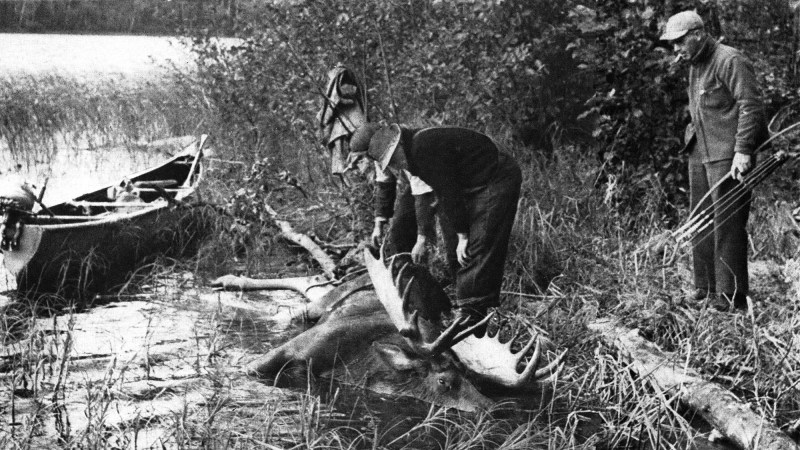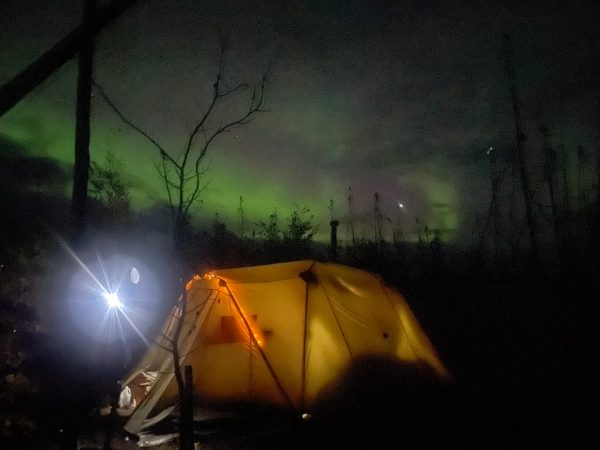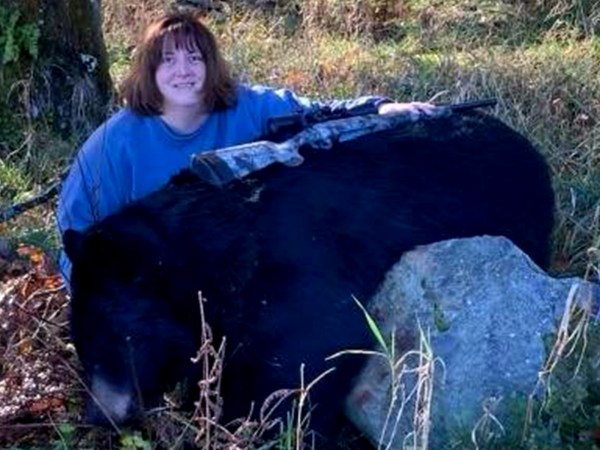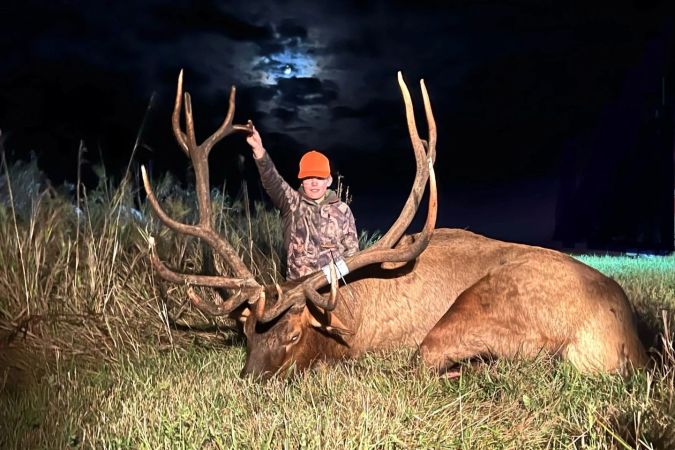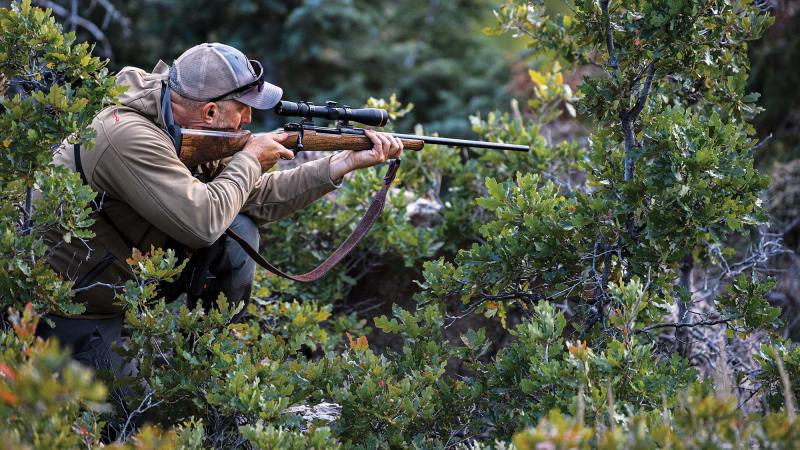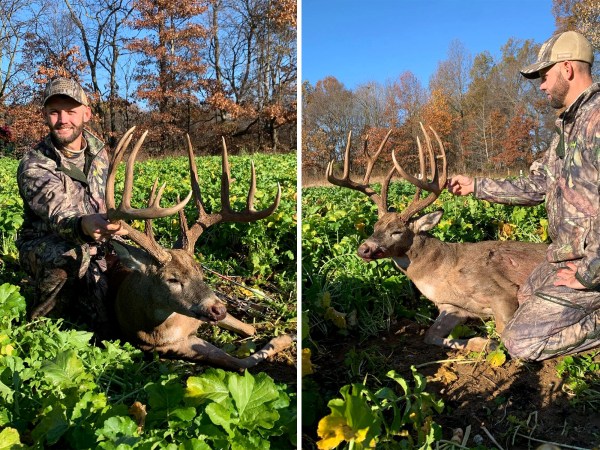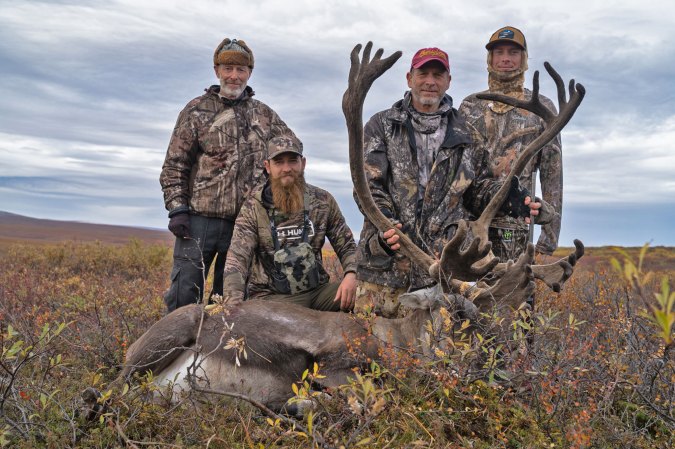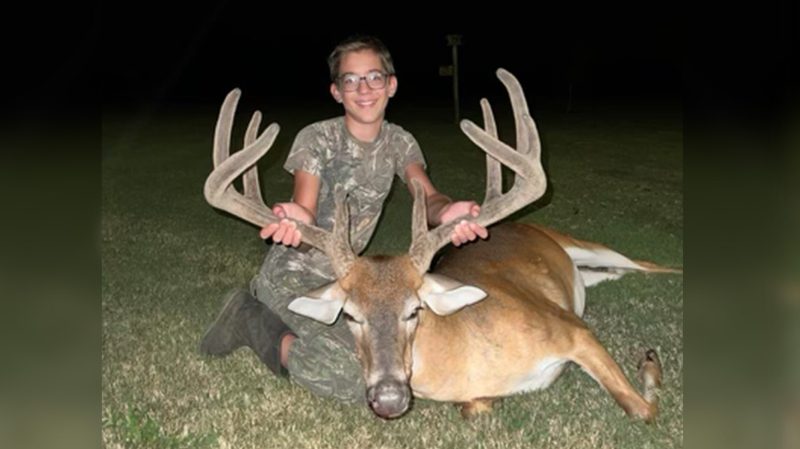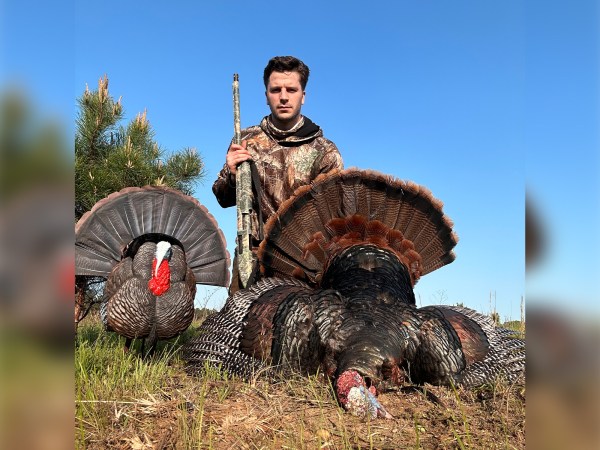A 57-year-old from Oakdale, California, might be the new world-record holder for muskox after a hunt near Contwoyto Lake in Nunavut. On Aug. 1, the first day of the hunt, Aron Wark and guide Sam Kapolak walked roughly 20 miles before Wark closed in on a 131-inch muskox. The requisite 60-day drying period has come and gone, and Boone and Crockett has taken preliminary action to enter the bull in the record books, and a panel of B&C judges will determine the official decision. The bull measured 131 4/8 inches, beating previous record-holder Alex Therrien’s bull by exactly 1 inch. Still, what Wark now remembers most about his hunt has little to do with his bull’s final score.
Wark’s history with big game hunting is intertwined with grief. His brother and longtime hunting partner was the first person to kill an elk with no hands, as Wark puts it. His brother, who was paralyzed from the neck down, used an early prototype for what would become the sip-and-puff-modified rifle to tag an elk and a mule deer in the same week in 1991. He passed away a month later from a blood clot while sighting in a custom muzzleloader for another hunt.
Wark, who had strayed from big game hunting after growing up chasing deer in his home state of Michigan, decided the best way to honor his brother’s memory was by getting back into it. So he started hunting around the West and beyond, chasing mountain lions, mule deer, bears, moose, and elk. Eventually, this journey landed him in the Canadian territory of Nunavut, next to a 369-square-mile lake and a defunct gold mine in an area with an annual average temperature of 10°F. (August is a pleasant time to visit, Wark says, despite the clouds of mosquitoes swarming the air in all his photos.)
Read Next: Nunavut Hunter Survives 5-Day Blizzard, Loses Both Hands to Frostbite
On the first day of their hunt, Wark and his guide spotted a muskox while waiting for a few packers to fly in from Yellowknife. Or, at least, Kapolak spotted it; The bull was about eight miles away and Wark couldn’t see it with optics.
“I do not know how Sam sees these things,” Wark says. “To this day, I still probably could not find that muskox. It was laying down and he could see it with inexpensive binos, but I don’t know how he did it. And he kept doing that all week.”
Wark and Kapolak took off across the lake and started climbing to approach the muskox, an average bull for the area. Eventually, Wark noticed that the wind was starting to change. As they closed in for a 150-yard shot, the bull caught their scent, stood, and started walking away. Wark threw his rifle on a boulder and prepared to take a standing shot. As soon as the muskox turned toward Wark, he pulled the trigger. The bull didn’t flinch and continued walking away, eventually turning broadside at 300 yards. Wark fired again. Nothing.
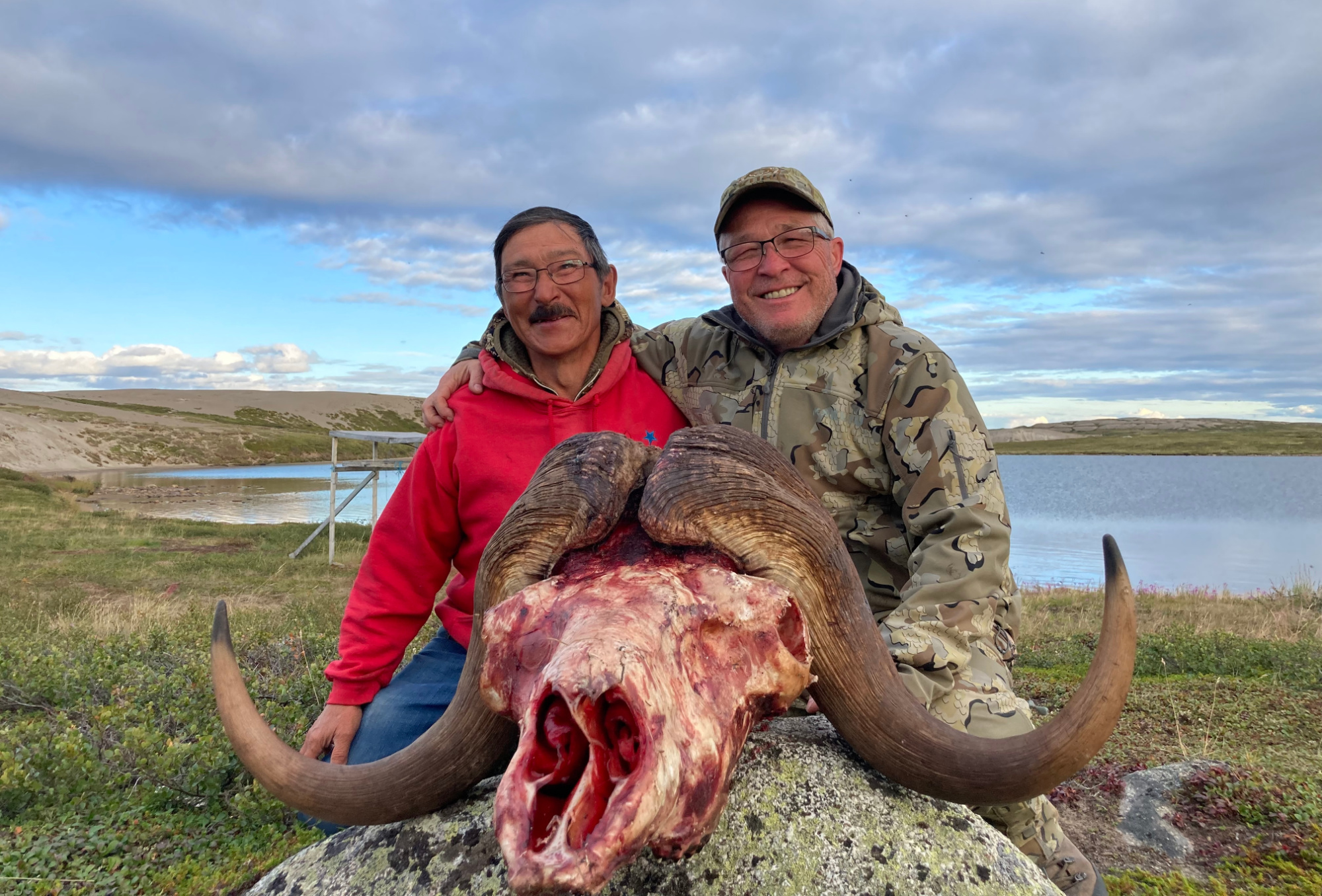
Photo courtesy of Aron Wark
Wark quickly determined that his Cooper Model 92, which he had zeroed before his hunt, was now off by about 4.5 inches at 100 yards — likely the byproduct of a rough flight or a close brush with a rock during the morning hike. The only thing they could do at that point was look for blood and try tracking the bull again. After a casual 12-mile jaunt through the tundra, they found neither.
Back in the boat with a few packers in tow, Kapolak decided to check a different spot on the other side of the lake, which meant a 45-mile boat ride. The group pulled into a shallow bay and saw a different bull running in the distance.
“That’s a pretty big bull,” Wark said to Kapolak, who agreed. But Kapolak hesitated to get Wark’s hopes up and didn’t sound too excited.
The group started walking, and soon Kapolak was a half-mile ahead of Wark, trying to cut the bull off. But Wark turned and noticed the bull had dropped down onto a different peninsula that they had motored past earlier. The packers dropped back to start working toward the bull, but Wark kept walking.
“I can’t get Sam’s attention, and I’m trying to catch up to him,” Wark says. “I probably walked another three or four miles like that, if not more. Sam finally turns around and looks at me. So I motion to him and turn around to start walking back toward the bull. Pretty soon, Sam passes me again. He caught up a half-mile on me in I don’t know how many minutes.”
Wark and Kapolak hopped back in the boat and drove to the shore of the peninsula. A large boulder kept them hidden from sight as they crept closer for an 84-yard shot. Wark set up on the boulder and compensated for the bad zero. Before Kapolak could give him the go-ahead, Wark fired a .338 Win-Mag into the bull’s vitals.
“Sam turns and starts yelling at me that he didn’t get a look at the other side [of the bull’s horns],” Wark says, noting that both he and one of the packers had seen both horns. “I assured him that I’d seen it, and that it was good.”
Read Next: Alaska State Trooper Killed by a Charging Muskox While Defending His Dogs
Wark followed up his first shot and the group approached the bull. The idea of a world record barely crossed anyone’s mind, Wark says. There were other, more immediate concerns at camp, like daily lessons on Inuktitut language and three straight nights of grizzly bear visits that the head, cape, and meat all somehow survived. The party tried taking the bull’s measurements with a metal tape measure, but Wark wouldn’t receive the official score until October.
The head and cape remain in Alberta where they await B&C record certification, which Wark estimates will happen in February. The meat went to families in Yellowknife. Wark returned to California at the end of the week, and plans to move to Colorado when the opportunity arises. His daughter and twin sons recently completed hunter’s education, which means hunting will likely become a family affair for Wark once again.
As for what he’s carrying away from the trip to Nunavut, Wark says its the people, the laughter, and the landscape that made the hunt what it was, not the sum of the 10 measurements from the bull’s two big, old horns — although yes, he’s quite excited about those, too.
“On the day of the hunt, I’ve never done that much walking in my life. It was a pretty hard day,” he says. “But whether I killed a muskox or not, this was the best trip of my life. I really mean that.”

